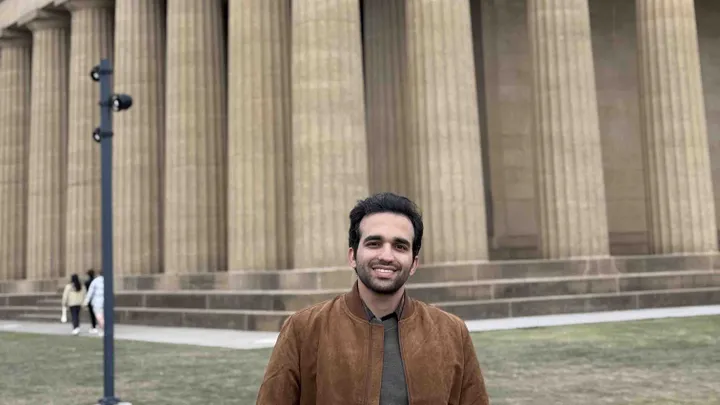Each day of the school week, students witness a battle between the two forces of flesh and metal.
“Metal versus flesh—metal always wins,” said Johnathan Speer, a senior majoring in English.
Crosswalks on campus exist to grant safe passage across the road, but as enrollment grows and the off-campus community expands, traffic congestion becomes worse, Speer said.
He said the crosswalk near the Ferguson Center overlooking Marr’s Spring Road has persisted to be a tangle of cars and students since his enrollment.
“It’s like a car attempting to move through a parade,” he said.
Christopher D’Esposito, assistant director of transportation services, said in an e-mailed statement that the University does not plan on charting new crosswalks for students unless new construction on campus creates the need for one.
“Since the campus is well established and pedestrian patterns have been established, new crosswalks usually occur only when there is a change in the environment, such as new construction, altered roadways or, as a result of construction, temporary crosswalks are needed to maneuver around a work-site,” he said.
The University intends to develop a more pedestrian friendly campus by expelling traffic from the campus core and designing new walkways, according to the Campus Master Plan.
“To minimize conflict between pedestrians and vehicles, the academic core of the campus is to be kept as vehicle-free as possible,” according to the Campus Master Plan. “New sidewalks and other walkways will be planned, designed and constructed to provide clearly defined routes that signal changes in use from solely pedestrian to a mix of pedestrians, bicycles and transit vehicles.”
Ralph Clayton, assistant director of transportation services, said CrimsonRide, the University’s transit system, reduces traffic congestion in the core of campus by transporting students from outer lying areas to the inner-campus.
He said the crosswalks are a slight impediment to the running of routes for bus drivers.
“All Crimson Ride drivers are instructed on applicable laws concerning pedestrians in crosswalks and receive several hours of driver training,” Clayton said. “While waiting for pedestrians in crosswalks adds a little time on routes, if those pedestrians were in automobiles the time would be much greater.”
Alabama state law requires vehicles to grant pedestrians the right of way when the pedestrian touches upon the half of the roadway the driver is intending to transit.
Speer said pedestrians too often distort the use of this law by walking into oncoming traffic via a crosswalk with the thought that drivers will put on the brakes.
“They don’t even look for the cars,” he said. “There is no consideration given to the fact that a lot of people don’t live on campus and must drive here.”
Wesley Turner, a former University student who studied mechanical engineering, said his initial impression with the traffic on campus was chaotic.
He said more crosswalks are needed.
As for traffic congestion, Turner said the CrimsonRide’s approach to reducing the presence of vehicles should become more elaborate.
“It’s more practical to change the bus system so that there’s less traffic,” he said.








